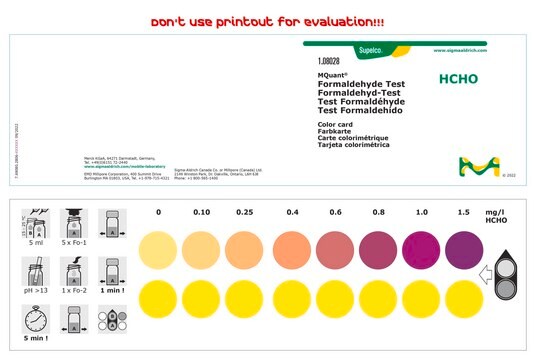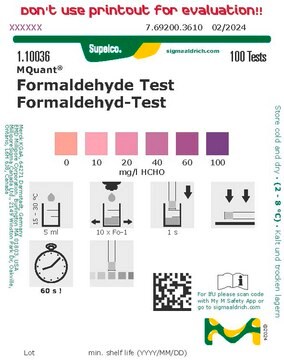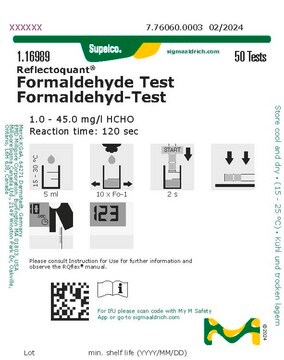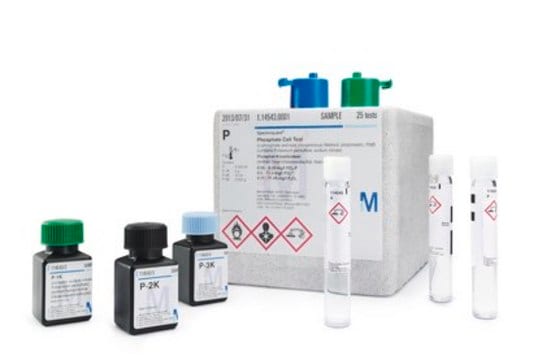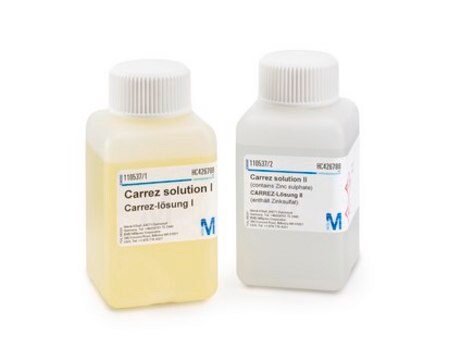MAK131
Formaldehyde Assay
sufficient for 100 fluorometric tests
About This Item
Produits recommandés
Utilisation
sufficient for 100 fluorometric tests
Méthode de détection
fluorometric
Maladie(s) pertinente(s)
cancer
Température de stockage
2-8°C
Catégories apparentées
Description générale
Application
- Modified Natural Rubber as a Simple Chemical Sensor with Smartphone Detection for Formaldehyde Content in a Seafood Sample.: This article explores the use of modified natural rubber as a chemical sensor, paired with smartphone detection, to measure formaldehyde content in seafood. This approach highlights the potential for accessible and mobile detection systems in food safety applications (Yeerum et al., 2022).
- Optical enzymatic formaldehyde biosensor based on alcohol oxidase and pH-sensitive methacrylic-acrylic optode membrane.: The study develops an optical enzymatic biosensor for formaldehyde, using alcohol oxidase with a pH-sensitive membrane, offering a novel approach for quick and sensitive detection in various analytical applications (Nurlely et al., 2022).
Caractéristiques et avantages
Adéquation
Principe
Mention d'avertissement
Danger
Mentions de danger
Classification des risques
Acute Tox. 4 Oral - Aquatic Chronic 2 - Eye Dam. 1 - Met. Corr. 1 - Skin Corr. 1A - STOT SE 1 - STOT SE 3
Organes cibles
Respiratory system
Code de la classe de stockage
6.1C - Combustible, acute toxic Cat.3 / toxic compounds or compounds which causing chronic effects
Classe de danger pour l'eau (WGK)
WGK 3
Certificats d'analyse (COA)
Recherchez un Certificats d'analyse (COA) en saisissant le numéro de lot du produit. Les numéros de lot figurent sur l'étiquette du produit après les mots "Lot" ou "Batch".
Déjà en possession de ce produit ?
Retrouvez la documentation relative aux produits que vous avez récemment achetés dans la Bibliothèque de documents.
Les clients ont également consulté
Notre équipe de scientifiques dispose d'une expérience dans tous les secteurs de la recherche, notamment en sciences de la vie, science des matériaux, synthèse chimique, chromatographie, analyse et dans de nombreux autres domaines..
Contacter notre Service technique